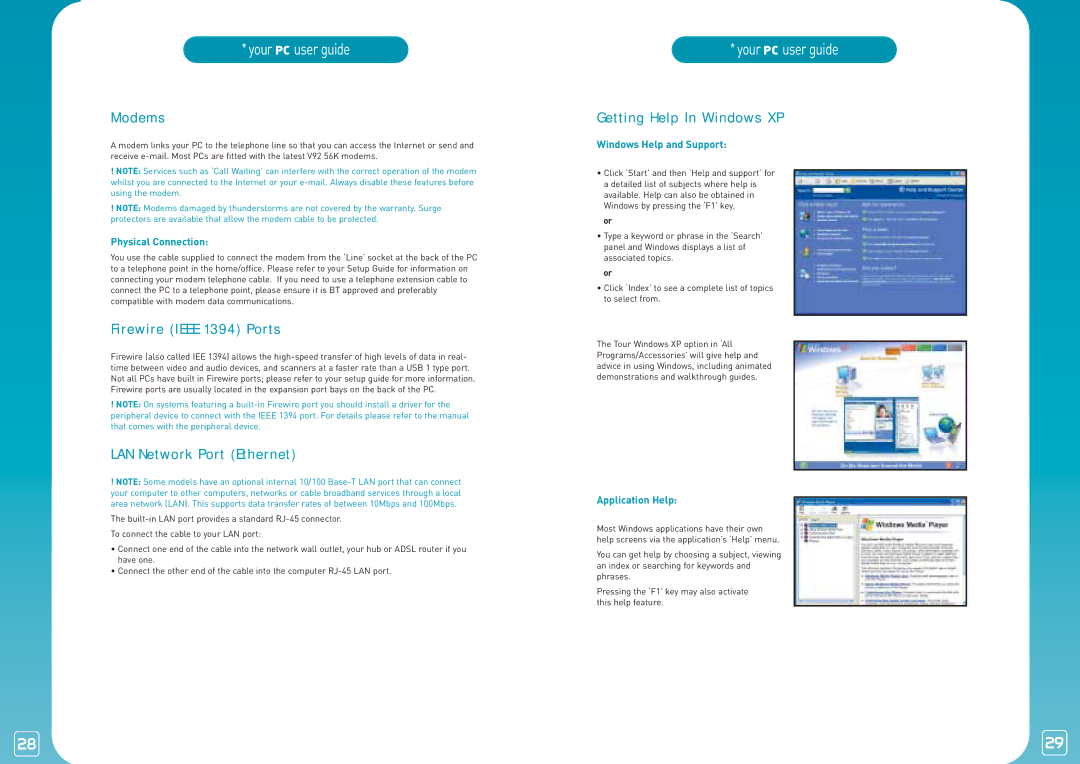
*your PC user guide
Modems
A modem links your PC to the telephone line so that you can access the Internet or send and receive
!NOTE: Services such as ‘Call Waiting’ can interfere with the correct operation of the modem whilst you are connected to the Internet or your
!NOTE: Modems damaged by thunderstorms are not covered by the warranty. Surge protectors are available that allow the modem cable to be protected.
Physical Connection:
You use the cable supplied to connect the modem from the ‘Line’ socket at the back of the PC to a telephone point in the home/office. Please refer to your Setup Guide for information on connecting your modem telephone cable. If you need to use a telephone extension cable to connect the PC to a telephone point, please ensure it is BT approved and preferably compatible with modem data communications.
Firewire (IEEE 1394) Ports
Firewire (also called IEE 1394) allows the
!NOTE: On systems featuring a
LAN Network Port (Ethernet)
!NOTE: Some models have an optional internal 10/100
The
To connect the cable to your LAN port:
•Connect one end of the cable into the network wall outlet, your hub or ADSL router if you have one.
•Connect the other end of the cable into the computer
28
*your PC user guide
Getting Help In Windows XP
Windows Help and Support:
• Click ‘Start’ and then ‘Help and support’ for a detailed list of subjects where help is available. Help can also be obtained in Windows by pressing the ‘F1’ key.
or
•Type a keyword or phrase in the ‘Search’ panel and Windows displays a list of associated topics.
or
•Click ‘Index’ to see a complete list of topics to select from.
The Tour Windows XP option in ‘All Programs/Accessories’ will give help and advice in using Windows, including animated demonstrations and walkthrough guides.
Application Help:
Most Windows applications have their own help screens via the application’s ‘Help’ menu.
You can get help by choosing a subject, viewing an index or searching for keywords and phrases.
Pressing the ‘F1’ key may also activate this help feature.
29
